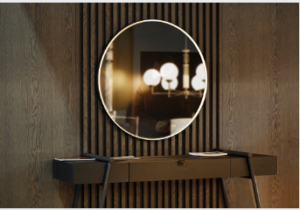Mirrors are flat objects used to reflect light. People use mirrors for numerous reasons, such as to check their appearance and for other purposes.
Many UnleyGlass mirrors Adelaide feature curvatures that may be either concave or convex.
For a mirror to reflect light effectively, its surface must be microscopic smoothness – this property is known as specular reflection.
Origins
 Mirrors have long been seen as symbols of vanity and self-awareness in society. Yet, their history can be troubling – not only due to the dangerous mercury used to line mirrors or reported murders in 17th-century Europe – but because mirrors can be fragile objects that pose risks when misused without appropriate safety precautions.
Mirrors have long been seen as symbols of vanity and self-awareness in society. Yet, their history can be troubling – not only due to the dangerous mercury used to line mirrors or reported murders in 17th-century Europe – but because mirrors can be fragile objects that pose risks when misused without appropriate safety precautions.
People may have first used mirrors around 8,000 years ago, according to vision scientist Jay Enoch in 2006. Most likely, these early mirrors consisted of water bodies or rock or clay containers reflecting light toward their source. In being effective as mirrors, surfaces must be flat, with roughness no more significant than half the wavelength of light passing through them.
People began producing glass mirrors of significant size only during the 16th century, initially in Italy, before expanding to England, France and Venice. Although early glass mirrors may have been slightly discoloured and bubbly at first, these early pieces still proved far more straightforward than any made from polished copper or bronze in Mesopotamia or Egypt up to 3,000 BC or China from 2000 BC onwards.
Mirrors with silvered surfaces that we now enjoy in our homes originated in Germany in 1835 when Justus von Liebig developed a process for coating one side of the glass with metallic silver. Later this technique was modified and refined until finally leading to what is known today as silvered-glass mirrors.
Materials
Mirrors have traditionally been constructed from glass. Glass is an affordable, easily formed material that transmits light – making it the ideal material to serve as a reflective surface.
Metal-coated glass mirrors were first developed around the 1st century AD. But it wasn’t until the advances of glassblowing and silvering enabled large-scale production until around the 13th to 15th centuries AD. Through silvering processes, metallic silver is deposited on surfaces. Although silvering is most popularly employed to produce mirrors, other metals like tin and copper may also be utilised to craft them.
Once a mirror has been designed and assembled, a coating process to enhance its reflectivity is undertaken. This step varies according to its intended use; such methods might involve anti-reflective coatings, anti-scratch layers or dielectric layers, which improve reflection for specific wavelengths.
Proper use of mirrors can transform rooms to appear larger and brighter. They can also serve to highlight decorative objects like paintings or antique furniture. When selecting a quality mirror with an even surface, ensure clear reflections. Regular cleaning with a glass cleaner will keep it looking its best!
Reflection
UnleyGlass mirrors Adelaide can be defined as anything that reflects most of the light that hits it without absorbing or scattering, much like the glass is known for doing. While glass may be cheaper and easier to find than metal-like counterparts, its reflection capabilities must still be very similar. Rough surfaces only reflect limited amounts of light.
Figure 2 illustrates this principle with visible light waves hitting a smooth mirror surface and being reflected off it with equal incidence angles, as defined by how flashlight beams appear when directed toward them.
Both wave and particle theories explain reflection. According to the wave theory, light waves emitted by light sources hit the mirror surface and reflect off its consistency in all directions before being inverted back-to-front by reflection and producing the mirror image seen by observers.
To experience it, place your right hand in front of a mirror and ask a friend to stroke, pinch, tap, or rub your hand while looking at its reflection. Your reflection should match whatever was occurring with your hand while nothing happened there.
Perception
UnleyGlass mirrors Adelaide reflect all colours comprising visible wavelength white light without absorbing any. As a result, mirrors create what is known as a virtual image: an illusion that objects behind its surface face in front of it and towards an observer. This effect occurs due to light rays colliding with our retinas to produce interference patterns like those shown below.
An unusual and counterintuitive effect created by mirrors is their ability to invert any object that appears lateral and inverted within their virtual images, as demonstrated in this demonstration of “mirror swap”. Raising one’s left hand in front of the mirror causes its virtual image to rise in the opposite direction, as illustrated here: